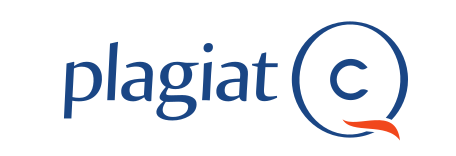BASIC INDICATORS FOR ASSESSING THE EFFECTIVENESS
Abstract
The analysis of the main models for evaluating the effectiveness of the e-learning process is proposed, and differences in schemes are determined by the degree of integration of distance technology into the learning process and the degree of implementation of distance learning in the educational process. The general problems and trends of implementing models for assessing the quality of distance learning in the educational space are highlighted. A set of main problem tasks within the e-learning process is defined, and schemes for solving them based on the concept of distance education are proposed. A basic classification of the main schemes and models for evaluating the components of the e-learning process is proposed. The main sets of metrics and qualitative indicators (educational, didactic and economic) for evaluating the effectiveness of the electronic educational process are highlighted. The main models for assessing the quality of the educational process in the context of their strengths and weaknesses for the electronic educational process are analyzed. In the process of dividing schemes and models for evaluating the educational process into basic classes, basic attributes and primary features of the electronic educational process were identified.
References
3. Kintonova, A., Povkhan, I., Sabitov, A., Tokkuliyeva, A., Demidchik, N. (2022). Online Learning Technologies, ENERGYCON 2022–2022 IEEE 7th International Energy Conference, Proceedings, 2022, 76–84.
4. Alt, D., Naamati-Schneider, L. (2021). Health management students self-regulation and dig- ital concept mapping in online learning environments, BMC Medical Education, Open Access Volume 21, Issue 1, December 2021, Article Number 100, 93–106.
5. Ferrer, N., Alfonso, J. (2010). E-Learning Content Management, Springer, 2010, 132.
6. How E-learning Platforms Are Gaining Popularity In The Ecommerce Industry (21 січня 2025). https://www.fatbit.com/fab/online-learning-vs-traditionallearning-a-study-on-elearning-platform
7. Pappas, С. (2019). e-Learning Statistics You Need To Know, Online learning statistics, 2019, 42.
8. Sigle, K. (2020). iSpring Suite 9: The Basics. IconLogic, Inc., 2020, 119.
9. Caudill, B., Banks, D. (2006). Pocket instruction for SCORM, JCASolutions, 1st issue, 2006, 114.
10. What is AICC (12 грудня 2024). https://www.growthengineering.co.uk/what-is-aicc.
11. Revilova, O., Santos, O., Restrepo, E., (2015). WCAG 2 in simple terms. ItakoraPress, 2015, 53.
12. Blokduk, G., (2018). A clear and concise XAPI reference. 5STARCooks, 2018, 137.
13. Masud, A., Huang, X. (2012). An Elearning System Architecture based on Cloud Comput- ing, World Academy of Science, Engineering and Technology, 2012, 62.
14. Chiasson, A. (2016). Mastering Articulate Storyline, Packt Publishing, 1st edition, 2016, 28.
15. Ruiz-Corbella, M., Alvarez-Gonzalez, B. (2014). Virtual Mobility as an Inclusion Strategy in Higher Education: research on Distance Education Master degrees in Europe, Latin America and Asia, Research in Comparative and International Education, 2014, Vol. 9, № 1, 165–180. 16. Wit, H., Ferencz, I., Rumbley, L. (2013). International student mobility: European and US perspectives. Perspectives: Policy and Practice in Higher Education, 2013, Vol 17, № 1, 17–23.
Abstract views: 129 PDF Downloads: 31







